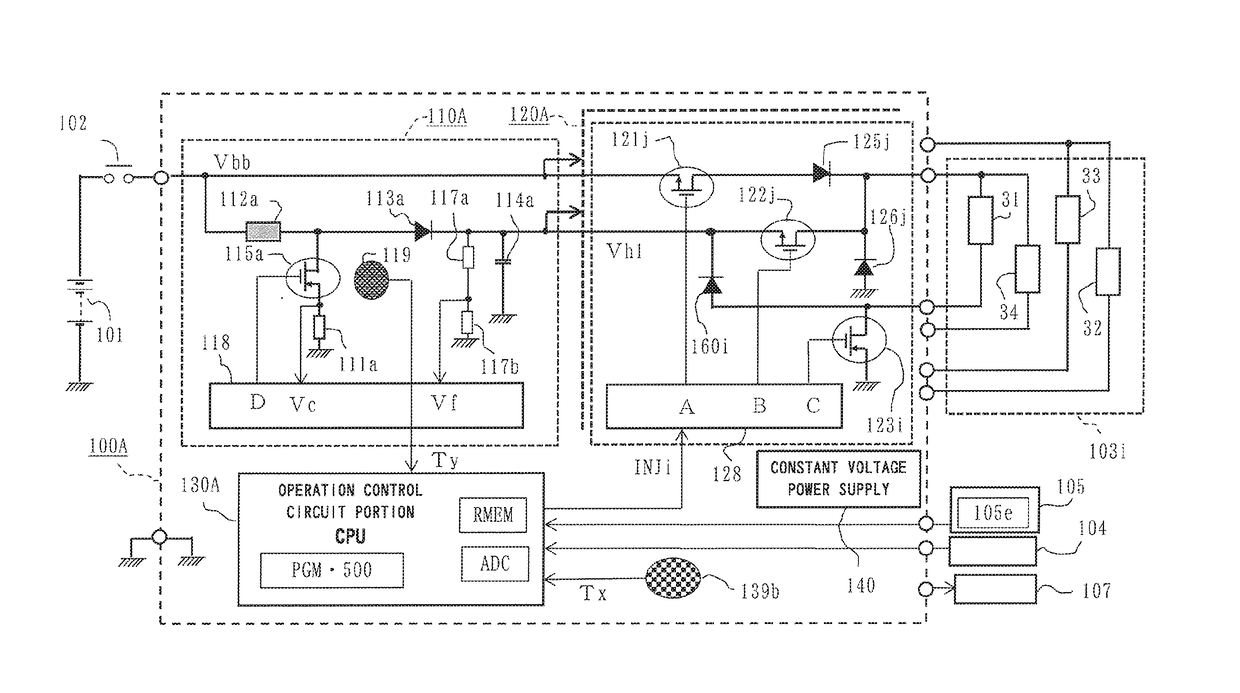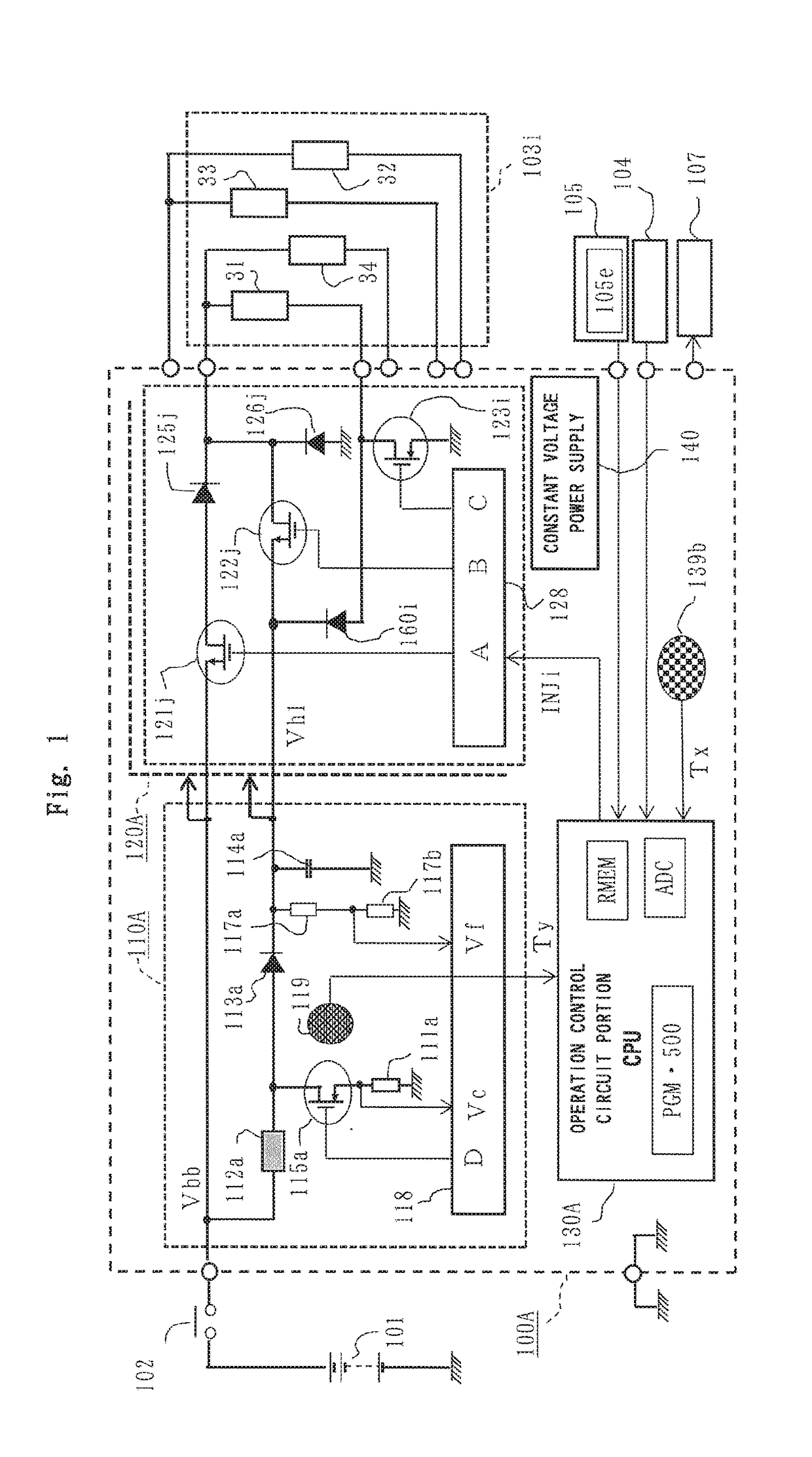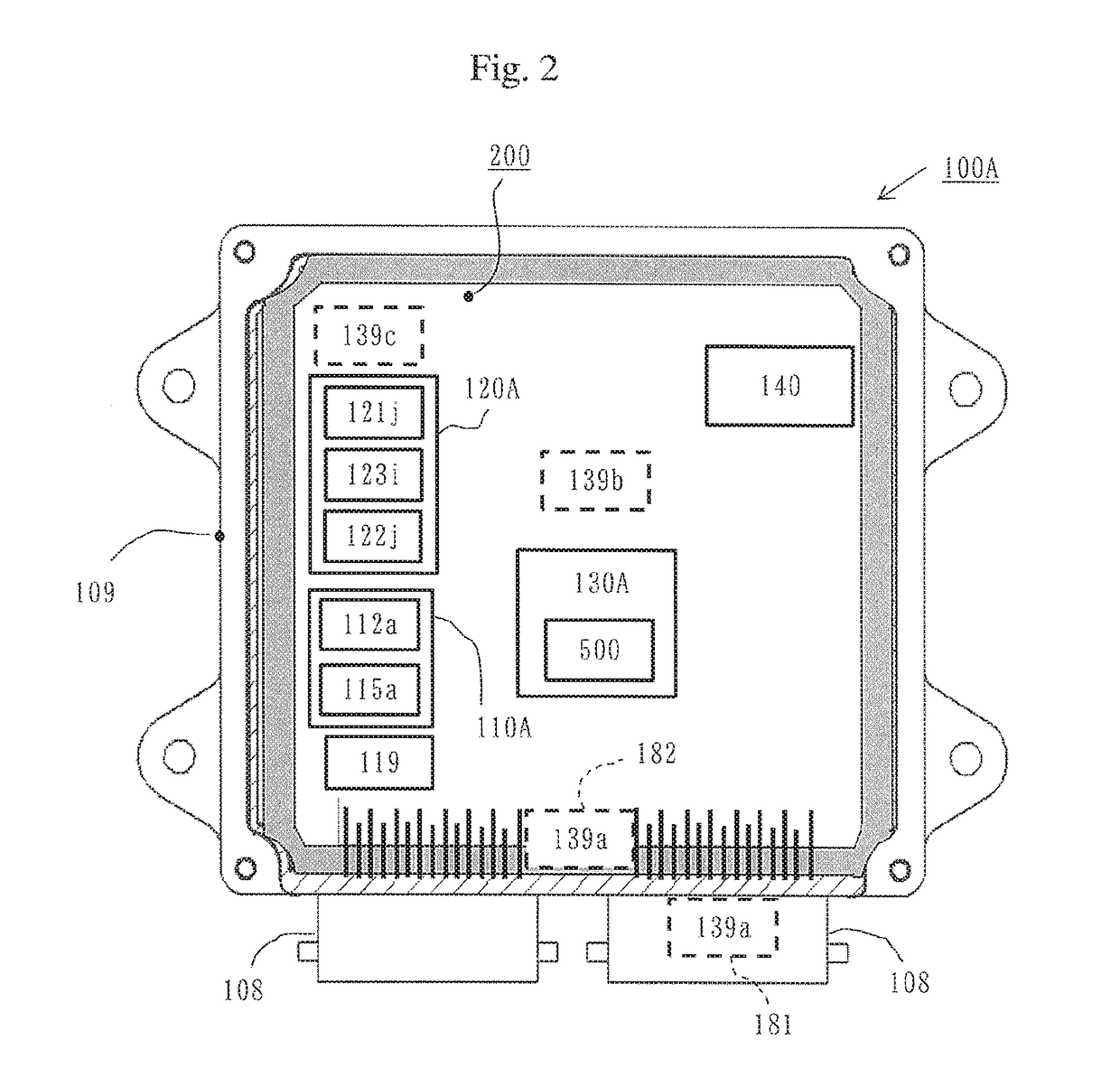In-vehicle engine control apparatus
a technology for control apparatus and engine, which is applied in the direction of electric control, heat measurement, instruments, etc., can solve the problems of increasing cost and vehicle weight, increasing the cost and weight of the vehicle, and affecting so as to achieve advantageously reduce the control load of the microprocessor and improve the combustion characteristic of the fuel
- Summary
- Abstract
- Description
- Claims
- Application Information
AI Technical Summary
Benefits of technology
Problems solved by technology
Method used
Image
Examples
embodiment 1
(1) Detailed Description of Arrangement
[0067]Firstly, an arrangement of FIG. 1 showing an entire electric circuit of an in-vehicle engine control apparatus according to Embodiment 1 of the present invention will be described.
[0068]In FIG. 1, an in-vehicle engine control apparatus 100A is mainly composed of a drive control circuit portion 120A for electromagnetic coils 103i (hereinafter, occasionally referred to as electromagnetic coil 103i in a singular form) of fuel injection electromagnetic valves provided in association with cylinder numbers i=1, 2, m of a multi-cylinder engine, a boosting control circuit portion 110A forming a high voltage power supply for rapidly exciting the electromagnetic coils 31-34, and an operation control circuit portion 30A composed of an integrated circuit element of one chip or two chips together with the boosting control circuit portion 110A, and a constant voltage power supply 140 for supplying a predetermined stabilized voltage to each control circ...
embodiment 2
(1) Detailed Description of Arrangement and Effect
[0230]Hereinafter, the arrangement and the effect will be described referring to FIG. 7 showing the entire circuit block diagram of an in-vehicle engine control apparatus according to Embodiment 2 of the present invention in attention to the difference from the apparatus shown in FIG. 1.
[0231]Throughout the figures the same reference numerals indicate identical or corresponding portions, in which the in-vehicle engine control apparatus 100A is replaced by an in-vehicle engine control apparatus 100B with the alphabet of the capital letter of the reference numeral's tail for indicating each Embodiment.
[0232]In FIG. 7, the first main difference between the apparatus in FIG. 7 and the apparatus in FIG. 1 is that with respect to the four electromagnetic coils 31-34 driving the fuel injection electromagnetic valves, a boosting control circuit portion 110B comprises two induction elements 112a, 112b, two boosting switch elements 115a, 115b ...
embodiment 3
(1) Detailed Description of Arrangement
[0287]Hereinafter, the arrangement and the effect will be described referring to FIG. 8 showing the entire circuit block diagram of an in-vehicle engine control apparatus according to Embodiment 3 of the present invention in attention to the difference with the apparatus shown in FIG. 1.
[0288]Throughout the figures, the same reference numerals indicate identical or corresponding portions, in which the in-vehicle engine control apparatus 100A is replaced by an in-vehicle engine control apparatus 100C with the alphabet of the capital letter of the reference numeral's tail indicating each embodiment.
[0289]In FIG. 8, the first main difference between the apparatus in FIG. 8 and the apparatus in FIG. 1 is that with respect to the four electromagnetic coils 31-34 driving the fuel injection electromagnetic valves, a boosting control circuit portion 110C comprises two induction elements 112a, 112b, two boosting switch elements 115a, 115b intermittently...
PUM
| Property | Measurement | Unit |
|---|---|---|
| voltage | aaaaa | aaaaa |
| voltage | aaaaa | aaaaa |
| voltage | aaaaa | aaaaa |
Abstract
Description
Claims
Application Information
 Login to View More
Login to View More - R&D
- Intellectual Property
- Life Sciences
- Materials
- Tech Scout
- Unparalleled Data Quality
- Higher Quality Content
- 60% Fewer Hallucinations
Browse by: Latest US Patents, China's latest patents, Technical Efficacy Thesaurus, Application Domain, Technology Topic, Popular Technical Reports.
© 2025 PatSnap. All rights reserved.Legal|Privacy policy|Modern Slavery Act Transparency Statement|Sitemap|About US| Contact US: help@patsnap.com



